Have you ever looked at the buttons and options on a projector remote and came across the letters “AV” and wondered, “What does AV mean on a projector?” Don’t worry; you’re not alone!
AV stands for audiovisual, so these cables bring your speakers, televisions, and other entertainment devices to life. AV output cords have facilitated home entertainment for families and individuals using gaming consoles or sound systems.
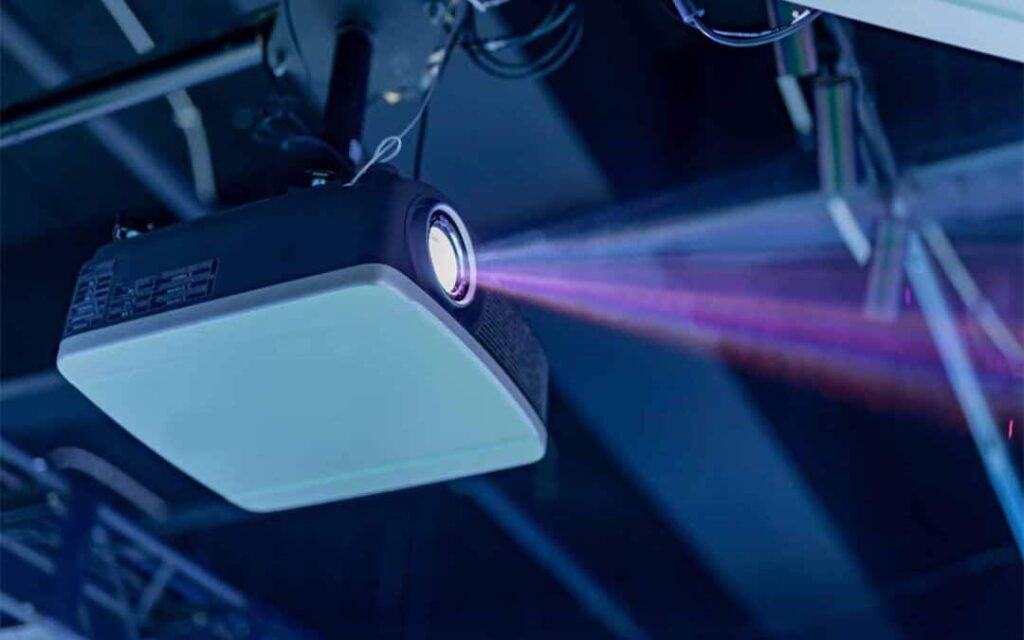
This article will demystify the term “AV” and help you understand its significance in projectors. So, grab your popcorn, get comfy, and dive into the fascinating details of audiovisual wonders!
Decoding “AV” on Projectors: A Quick Guide
Before we delve into its details, let’s first understand what AV is and how it works. We’ll explore how to make the most of it and harness its benefits for optimal use.
1. AV Stands for Audio Visual
“Audiovisual,” or “AV,” refers to blending sound and vision. It’s similar to hearing performers speak while watching them on screen in a movie. AV combines the power of both senses.
2. AV Cables
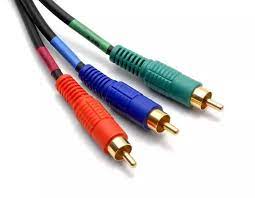
AV cables act as a bridge between various devices. They transfer audio and video signals between locations. Consider them as special messengers that ensure the presentation’s audio and visual components are in sync.
3. Connecting Devices with AV Cables
A projector’s “AV” designation indicates that it can be used with additional technology, such as DVD players, computers, or game consoles.
These devices are connected to the projector using AV cables. In this way, the sounds and visuals produced by these gadgets are displayed on a large screen.
4. Enhancing Your Experience
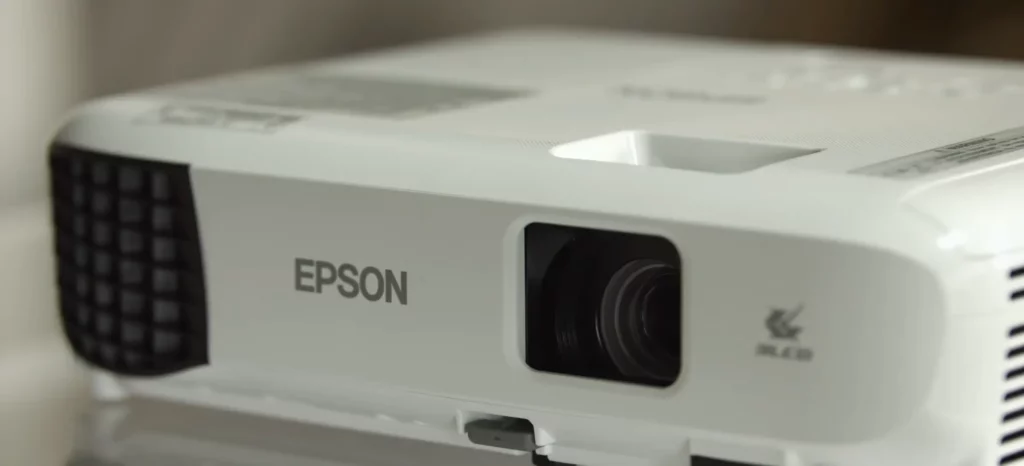
You may have a bigger and better experience by connecting gadgets via AV. Imagine viewing movies with thunderous sounds or playing video games on a huge screen. AV makes it feasible by fusing the audio and the pictures.
I provided the Reddit link here so that you can also benefit from the experiences and discussions of others.
5. How to Use AV on a Projector
Using AV on a projector is easy. Connect your audio source (like a speaker or sound system) to the projector. This way, when you play something on the projector, the sound will come from the connected audio source, making the whole experience more immersive.
Simple Steps to Connect and Use AV on a Projector
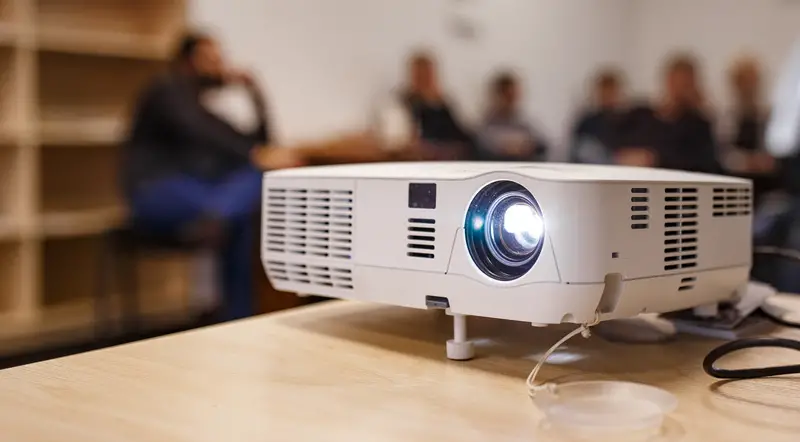
Using AV on a projector might seem like a complex task, but with a little guidance, it becomes a breeze. Here’s a step-by-step breakdown of how to successfully connect and utilize AV on a projector:
Step 1: Check Ports
Before you begin, identify the AV ports on your projector and the device you intend to connect. AV ports typically look like round, multi-coloured sockets that match the plugs on AV cables.
Step 2: Get Your AV Cables
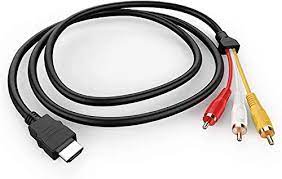
First, gather the special AV cables that fit just right. These cables have plugs that match the AV ports on your projector and the other device you want to connect. Sometimes, they even have colors to help you match them correctly.
Step 3: Connect the Cables
Now, it’s time to plug in those AV cables. One end goes into the AV output on your device, like a DVD player or game console. Push it in firmly so it doesn’t wiggle. Then, the other end goes into the AV input on the projector.
Step 4: Turn On the Power
Make sure both the projector and your device are turned on. You want them to be ready to talk to each other.
Step 5: Choose the Right Source
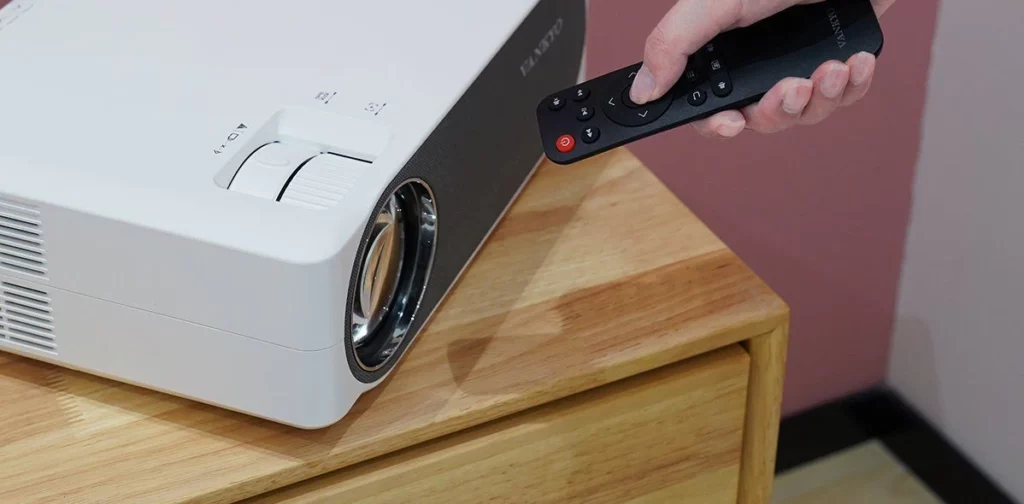
Use the projector’s menu or remote control to pick the AV source. This tells the projector you want to see and hear what’s coming from your device through the AV cables.
Step 6: Adjust Things if Needed
Depending on what you’re showing and how the room looks, you might need to change some settings on the projector. You can make the picture brighter or the colors just right so everything looks awesome.
Step 7: Enjoy the Fun
Now, it’s time to sit back and enjoy! Your device’s pictures and sounds will show up on the big screen. It’s like having a mini theater at home or in class.
Gain insights from the Reddit link: “Simple Steps to Connect and Use AV on a Projector.” Discover straightforward methods to harness the power of audiovisual technology for an enriched projector experience.
6. When AV Isn’t Needed
There may be instances when you don’t require AV, even though it can improve the projector experience. For instance, you might not require the audio portion if you’re using the projector to display silent slides. In these circumstances, you can concentrate on the visual element.
Exploring Essential AV Equipment
Now you’ll know what “AV” means on a projector, so let’s explore essential AV equipment. Let’s stroll through the amazing gear that brings clarity to our sounds, depth to our visuals, and magic to our presentations.
Microphones: Listening and Capturing
Think of microphones as super ears for our gadgets. They’re like invisible listeners that catch every sound and turn it into electronic signals. You’ve probably spotted them in classrooms and meetings, recording lectures, talks, and podcasts.
Speakers
Speakers are the heroes that turn those electronic signals back into sounds we can hear. They’re like music players that fill the air with melodies and voices. We find them in home theaters and big halls. Like storytellers, they help us feel the excitement in movies and the emotion in songs.
Projectors and Screens
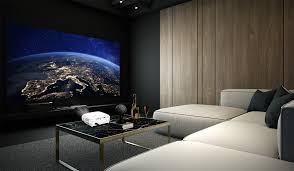
Projectors are like magic projectors from a storybook. They beam images onto screens, making classroom lessons and meeting presentations more exciting. Screens are like big TVs that show us these colorful stories.
Projector Inputs
- Projectors are clever because they have special plugs to listen to different gadgets.
- HDMI is a popular plug that shows high-quality pictures.
- VGA is an older plug that some computers use.
- There’s also something called Component Video for fancy projectors and DisplayPort for new ones. They all help projectors show images from computers or other devices.
Interactive Displays
Imagine a screen that listens when you touch it – that’s an interactive display! It’s like a modern TV that you can tap and swipe. We find these in boardrooms, classrooms, and even waiting rooms. They let presenters control what’s on the screen by touching it.
Lighting

Lights aren’t just for brightening up a room. They can create feelings and special effects. Some lights sit on top of speakers, like shining stars. Others spotlight people on a stage, making them the center of attention. And then some lights flash during transitions, like scenes changing in a play.
Cables and Adapters
Cables and adapters may look small, but they’re the secret links that connect all these gadgets. They’re like bridges that help sounds and pictures travel smoothly from one place to another.
You can buy them one by one or get a bunch together. If you’re working on a big project, having many different cable lengths is super handy. That way, you can connect things far away without cutting or joining wires.
I provided the Quora link here so that you can also benefit from discussions if you are confused.
I’ve included some FAQs covering queries to ensure your understanding is crystal clear, solely for your convenience, so that your grasp of AV-related matters becomes thorough.
FAQs
Why Is AV Important on a Projector?
AV enhances the overall viewing experience on a projector by synchronizing high-quality sound with clear visuals. It brings movies, presentations, and videos to life, making them more enjoyable and impactful.
How Do I Use AV on a Projector?
To use AV on a projector, you’ll need to connect an audio source, such as external speakers or a sound system, to the projector. This ensures that the sound complements the visuals and provides a more complete multimedia experience.
What Are the Benefits of AV on a Projector?
AV on a projector improves the quality of presentations, movies, and videos by delivering better sound clarity and more realistic effects. It immerses the audience in the content, making it feel like a complete sensory experience.
Can I Turn Off AV on a Projector?
Yes, you can choose whether to use AV on a projector. If you’re showing visual content without the need for sound, you can opt to turn off the audio part and focus solely on the visuals.
Do All Projectors Support AV?
Most modern projectors are designed to support AV, allowing you to connect audio sources and enjoy synchronized sound and visuals. However, it’s always a good idea to check the specifications of your specific projector model to ensure AV compatibility.
Conclusion
“AV” on a projector signifies the synergy of audiovisual elements. It represents the harmonious integration of sound and images, elevating the projector experience to new heights. AV transforms ordinary presentations and screenings into captivating, multisensory journeys by combining crisp visuals with immersive audio. Embracing AV on a projector unlocks a realm of possibilities, making every moment a dynamic and engaging encounter for both the eyes and ears.
REFERENCES
- https://www.quora.com/What-are-the-benefits-of-having-audiovisual-equipment
- https://www.quora.com/What-is-an-AV
- https://www.reddit.com/r/hometheater/comments/muolg5/how_do_you_stream_content_to_your_projector/
- https://en.wikipedia.org/wiki/Projector


Fernando Shrader
Hey, It’s me, Fernando Shrader. I’m the creator of this website. You might wonder why I’ve created this blog and what’s the difference between Visual Finds and other online blogs. As a professional technician working for the last 8 years with projectors, I though this is the right time to share what I’ve learned in this journey with an online audience so they can see what I’m doing and how they can solve their problems! Happy Learning!
